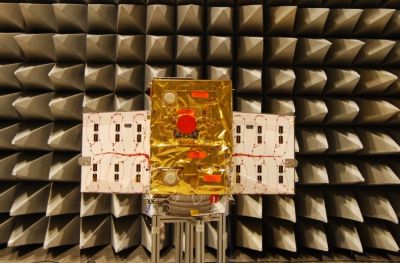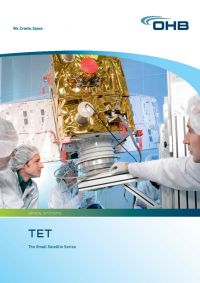Small Satellite Platform TET-X / TET-XL

The TET-1 Mission
The small satellite TET-1 is the first German Technology Experiment Carrier and represents the core element of DLR’s On-Orbit Verification Program. TET-1 was successfully launched 22 July 2012 from Baikonur with a Soyuz-Fregat that injected the satellite into its destined Low Earth Orbit at about 510 km. TET-1 is now successfully operated in orbit for more than two years. After successfully completing the On-Orbit Verification (OOV) mission in October 2013 the spacecraft was handed over to DLR’s FireBird mission. Since then it is used mainly for forest fire detection and monitoring.
The TET-X / TET-XL Small Satellite Family
Expanding on the TET-1 heritage there are now two small satellite product lines: TET-X and TET-XL, which together encompass spacecraft possibilities ranging from 100 kg up to 250 kg. With its flight proven heritage and its modular design, the TET satellite is perfectly suited to be easily adapted to a variety of different mission needs. Such missions include not only the continuation of the OOV applications, but also dedicated missions such as classical Earth observation missions, but also commercial missions.
Just like in TET-1, the TET Small Satellite Family is built by OHB System AG in its Munich site together with the trusted partner Astro- und Feinwerktechnik Adlershof GmbH (AFW). OHB System as mission and space segment prime is responsible for spacecraft level engineering including payload accommodation design, payload supporting structure, the flexible, modular Payload Supply System (PSS), spacecraft thermal and structural engineering as well as spacecraft integration and test. As mission prime OHB System also is responsible for mission design. AFW on the other hand is responsible for the satellite bus, providing the assembled bus sub-systems which incorporate the TET-1 design heritage to the maximum extent. AFW with their extensive bus expertise also provide mission specific Attitude Control and Power analyses.


